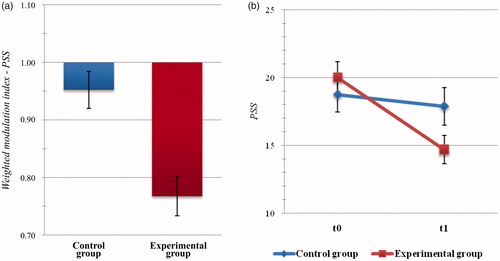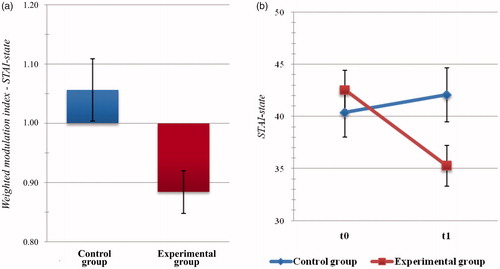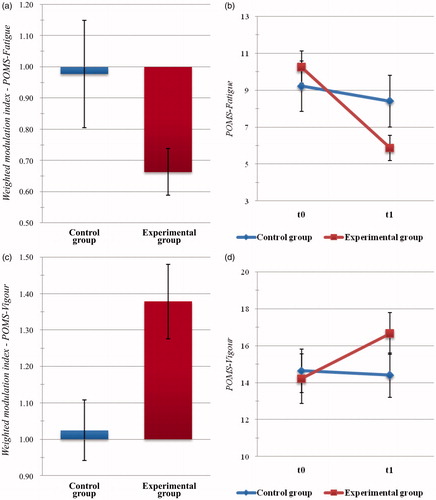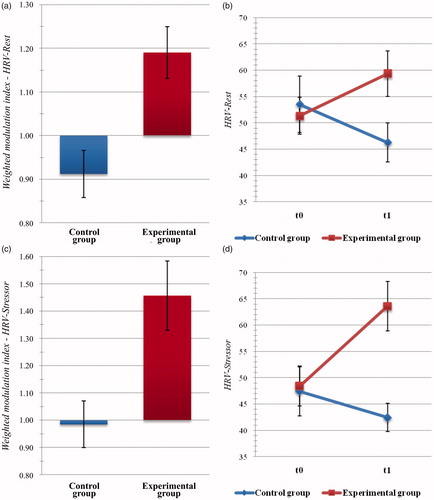Figures & data
Table 1. Demographic and pre-intervention psychometric data – active control and experimental group – and significance of between-group statistical comparisons.
Figure 1. (a) Overall structure of the study and experimental steps. (b) An example of wearable brain-sensing device used in the study (Lowdown Focus, SmithOptics Inc.) and of a screenshot of the dedicated app concerning the feedback on session data.

Figure 2. Psychometric outcome measures: level of perceived stress. (a) Histogram of post-intervention modulation (weighted modulation indices) and (b) raw data of participants’ scores at the Perceived Stress Scale (PSS). Blue: active control group; dark red: experimental group. Bars represent ± SE.

Figure 3. Psychometric outcome measures: level of anxiety. (a) Histogram of post-intervention modulation (weighted modulation indices) and (b) raw data of participants’ scores at the State-Trait Anxiety Inventory (STAI), state subscale. Blue: active control group; dark red: experimental group. Bars represent ±1 SE.

Figure 4. Psychometric outcome measures: mood profile. Histogram of post-intervention modulation (weighted modulation indices) and raw data of participants’ scores at the Profile of Mood States questionnaire (POMS), Fatigue (a,b) and Vigor (c,d) subscale. Blue: active control group; dark red: experimental group. Bars represent ±1 SE.

Figure 5. Psychophysiological outcome measures: heart rate variability (HRV). Histogram of post-intervention modulation (weighted modulation indices) and raw data of participants’ HRV metrics during eyes-open rest (a,b) and during exposure to a cognitive stressor (c,d). Blue: active control group; dark red: experimental group. Bars represent ±1 SE.

